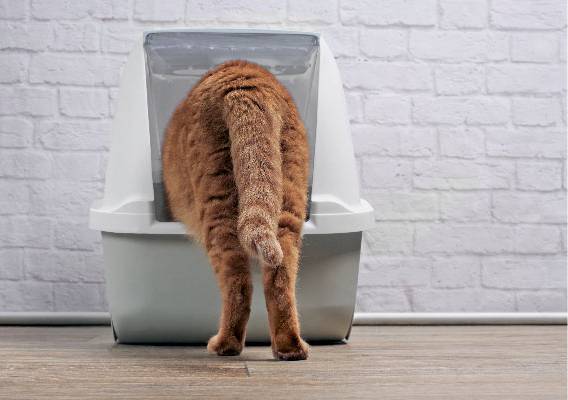
What are the best conditions for travelling with your cat?
Travelling with your cat requires some preparation to make sure your feline friend changes its environment under the best conditions. While dogs find travelling quite easy, cats tend to appreciate their comfort. Any disruption to their routine is a source of stress which you should strictly keep to a minimum. Hopi Family improves your day to day with your pets through expert safety tips for an enjoyable trip with your cat!
CAN YOU TRAVEL WITH YOUR CAT?
Yes, of course you can travel with your cat, but bear in mind that cats are territorial animals with their own particular habits.
If you don’t train your cat to go in its carrier and travel from a young age, then the experience is likely to be complicated.
Take your cat on a relaxing break, where it will be able to find its feet again after a challenging journey. When taking a cat on a road trip, there is a high risk that it could escape at the first opportunity!
WHERE CAN YOU GO ON HOLIDAY WITH YOUR CAT?
If you would like to go on holiday with your cat, you should find cat-friendly accommodation to guarantee the best conditions for your stay.
For your trip, if travelling by car, you will only need to invest in a carrier suited to your pet’s size. If travelling by plane, train or boat, inform the travel company when making your reservation so that you can purchase a ticket for your pet. And even before that point, find out about the travel operator’s obligations and requirements sufficiently in advance. Some companies can require documents, vaccines or parasite repellent treatment, in addition to requirements relating to pet carriers.
For your first trip with your cat, we advise choosing a quiet, relaxing destination where your feline friend will easily make itself comfortable.
If you decide to let your cat go outside, like at home, we recommend attaching a pet GPS, to help locate or retrieve your pet.
😸 Harness and lead? If you are planning to travel with your cat, the first thing you should do is to get it used to wearing a harness and collar. The pet carrier will then be the next step, but you will not be able to travel with your feline friend if it is not on a lead at all times and might run away. When a cat is frightened, its first reaction is to run away to find a safe place to hide. However, at motorway service stations, airports and train stations, the only safe place is its carrier. A lead and harness are essential in order to let your cat out of its carrier in complete safety.
WHAT DO YOU NEED IN ORDER TO TRAVEL WITH YOUR FELINE FRIEND?
When travelling, your cat will need:
- pet ID papers (passport) and a medical certificate dated within the past 10 days, which are sufficient for most European countries;
- up-to-date vaccination (feline influenza, feline typhus, feline leukaemia virus and rabies);
- an electronic chip, mandatory in nearly all countries worldwide, especially France!
Visit your veterinary surgeon before your departure so that your pet can have a full check-up. Your animal health expert may also prescribe calming products containing plants or pheromones, to help your pet cope with the stress of travelling.
Your cat’s suitcase should contain:
- a bed, even though your pet might be used to sleeping in several different places at home, it will have to make do with just the essentials during your trip;
- food and water bowls;
- litter tray and litter. These can undoubtedly be purchased upon arrival at your destination if you need to travel light, if going by plane or train;
- harness and lead with an identification disc;
- your pet’s usual food, together with a few treats for pleasure. You will undoubtedly find the same type of pet food at your destination if you are staying in France, but take enough to last two or three days just in case;
- any medications, where necessary, including calming products specially for travelling, and an antiemetic if your pet gets travel sick;
- your cat’s toiletries, including its brush or comb for taking care of its coat;
- one or more toys, so your cat is reassured by its familiar things;
- a plastic pet carrier.
Now you’re all set to travel with your cat. To prepare your pet before your departure, the best thing is to avoid changing your habits at all!
Several weeks before your departure, simply place the open pet carrier in the middle of your living room or in one of your cat’s favourite places. Allow your cat to discover this new object. It is better to plan ahead than to attempt to force your pet inside on the day…

If your cat is reluctant to approach the carrier, you can place some food in there, to encourage it to go inside. And if your cat is still reluctant when it’s time to leave, in spite of this, you can try placing it into the carrier from behind, to prevent it using its front legs to resist entering the carrier.
In the most difficult situations, or when the cat is particularly averse to the idea of travelling, place the carrier in a vertical position, with the door facing upwards, and lower your cat into the carrier back feet first. The carrier will be closed with your cat inside before it realises what has happened!
🙀 Is quarantine necessary? Some countries are very protectionist regarding the entry of animals, especially cats, into their territory. This is the case for Australia which requires a quarantine period. If you are just travelling for a few days or weeks for leisure, avoid putting your pet through this challenging time, as quarantine conditions are particularly stressful for pets, unless you are moving abroad. Your feline friend will be more comfortable being looked after at home or at a cattery while you go on an exotic trip.
WHAT SHOULD YOU LOOK OUT FOR WHEN TRAVELLING WITH YOUR CAT?
If your cat is prone to nausea or vomiting when travelling, your veterinary surgeon will have prescribed a suitable treatment. You should still keep some wipes and waste bags on you to keep your car clean.
We recommend taking away your cat’s food bowl a few hours before you leave, as your pet will travel better on an empty stomach.
If complementary foods don’t seem to have an effect on your feline friend, it is best to do without, as vets advise against the use of powerful calmers that would put your cat in a comatose state which would make your pet even more anxious.
Your cat will stay in its carrier attached to the back seat with the safety belt throughout your journey. You will put your cat in the carrier in your home, and it will only come out once you’re inside your holiday accommodation. The safety of both you and your cat depends on this. No matter how at comfortable your cat feels in your car, you cannot allow your pet to walk around and jump on your car seats. Moreover, if you were stopped by the police you could get fined!
The most important thing is to keep an eye on your pet during the journey. If your pet seems anxious, but is not showing any other signs of discomfort, then leave it alone. The journey will undoubtedly be a difficult moment for your pet to go through.
However, keep the inside of the car at a pleasant temperature, but ensure there are no draughts. Place your pet on the side with the most shade.
If your cat starts panting like a dog, you will need to cool it down immediately. Give it water to drink and run a wet wipe over its coat. You can plan ahead for these problems by placing a cooling mat inside the carrier. That way you will avoid opening the carrier during the journey.
🥵 Deadly heat! Never leave any animals, cats, dogs or exotic pets alone in a car, even for a few minutes with the windows open. The car interior heats up much faster than you imagine, and your pet can rapidly become dehydrated. Take the carrier with you whatever happens!
IS IT REALLY A GOOD IDEA TO CHANGE YOUR CAT’S ENVIRONMENT?
Even though it’s heart-breaking, your cat will no doubt prefer to be separated from you for a few weeks rather than face a stressful journey and having to adjust to a new environment.
Each cat is unique, as is your relationship with each other:
- Do you think your cat would be happy leaving its familiar surroundings?
- Is your cat used to travelling with you?
- Does your cat get into its carrier by itself?
- Can you walk your cat on the pavement with a lead and harness?
- Does your cat naturally get anxious whenever there is a change?
Only you can answer these questions. Excessive stress can cause a cat to become unwell. Moreover, if you decide to have someone look after your cat, it can easily stay at home and a friend can come to see it once or twice a day. Cats are not like dogs who need to go out several times a day and struggle when left alone.
If you have someone you trust and your pet is most comfortable in its home environment or is prone to stress, we advise against travelling with your cat.
However, if your cat enjoys going everywhere with you and has already gone away with you several times before, then go for it! Choose a carrier that is perfectly suited to your pet’s size, and find a holiday that meets your cat’s needs and habits.

